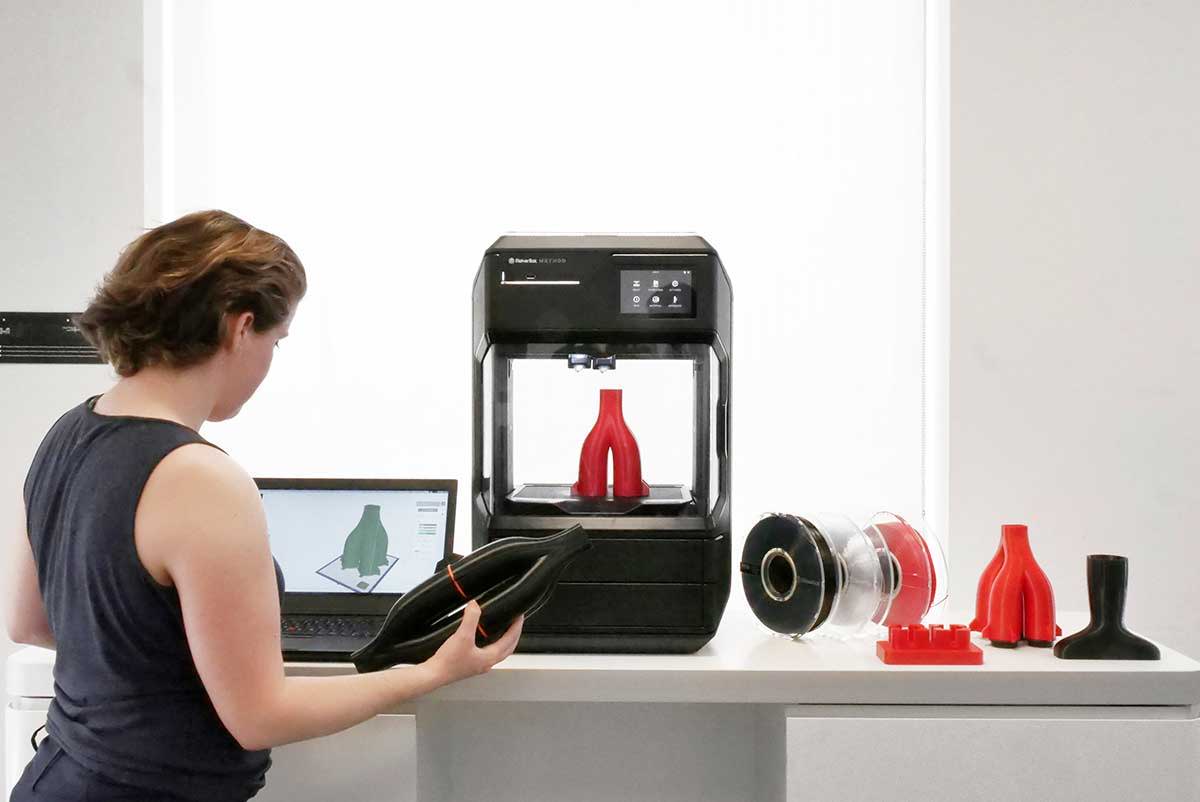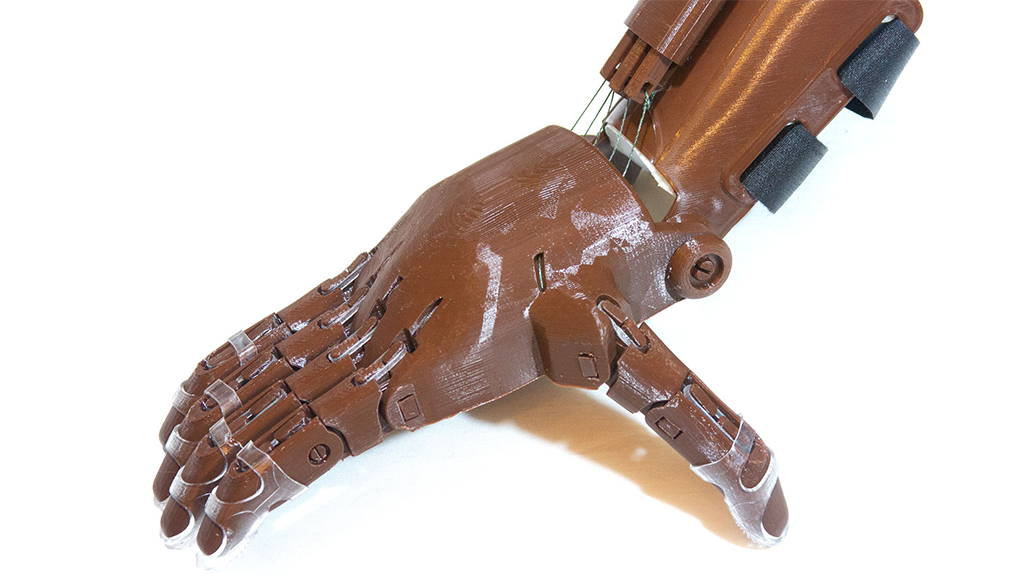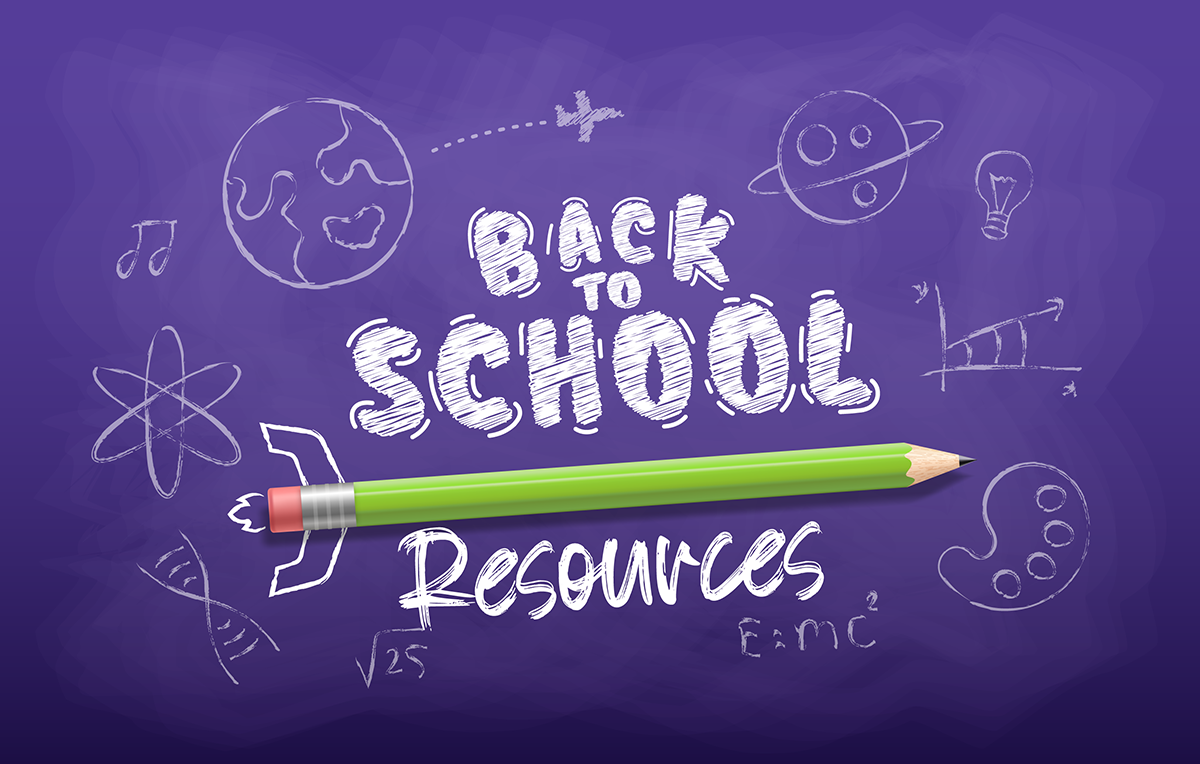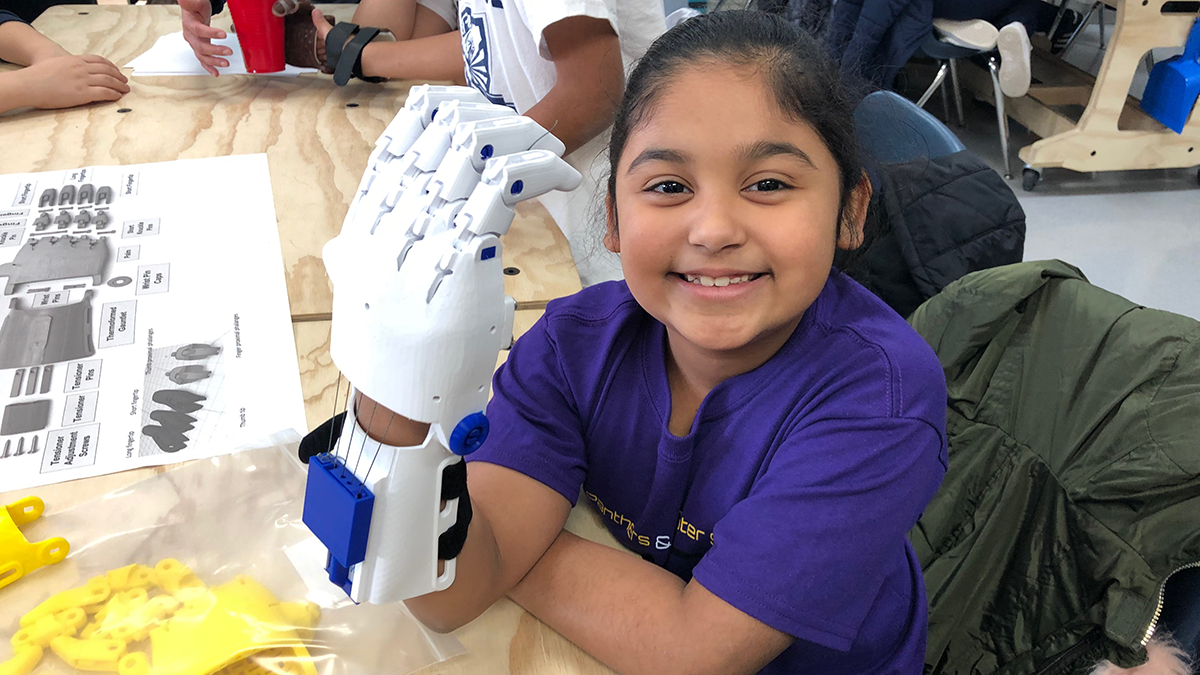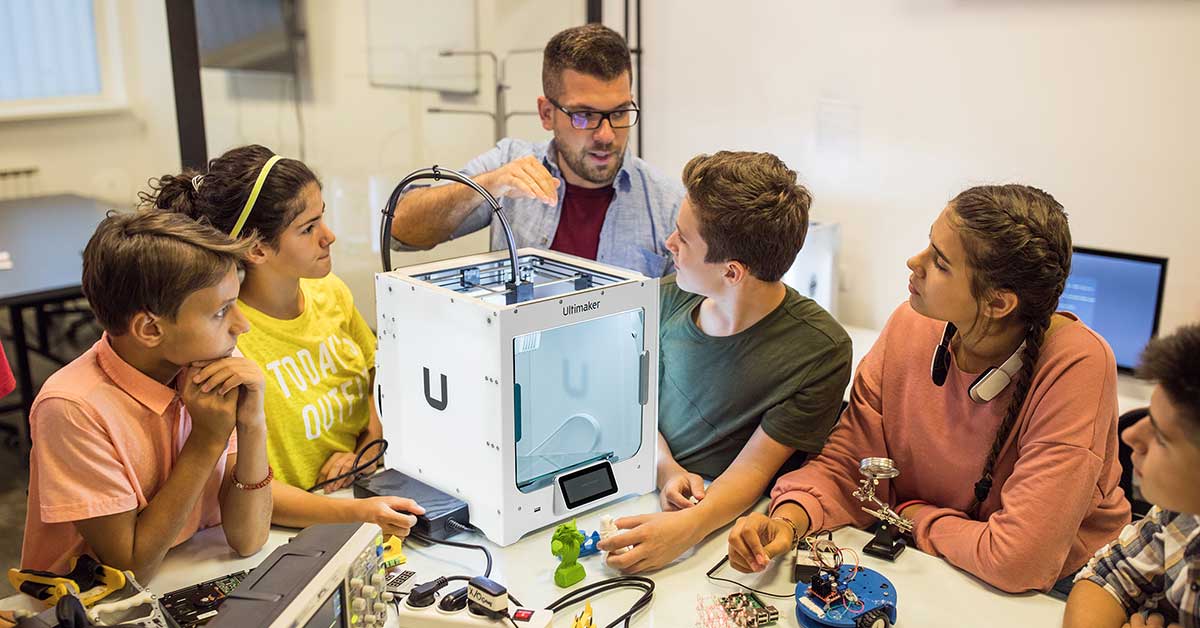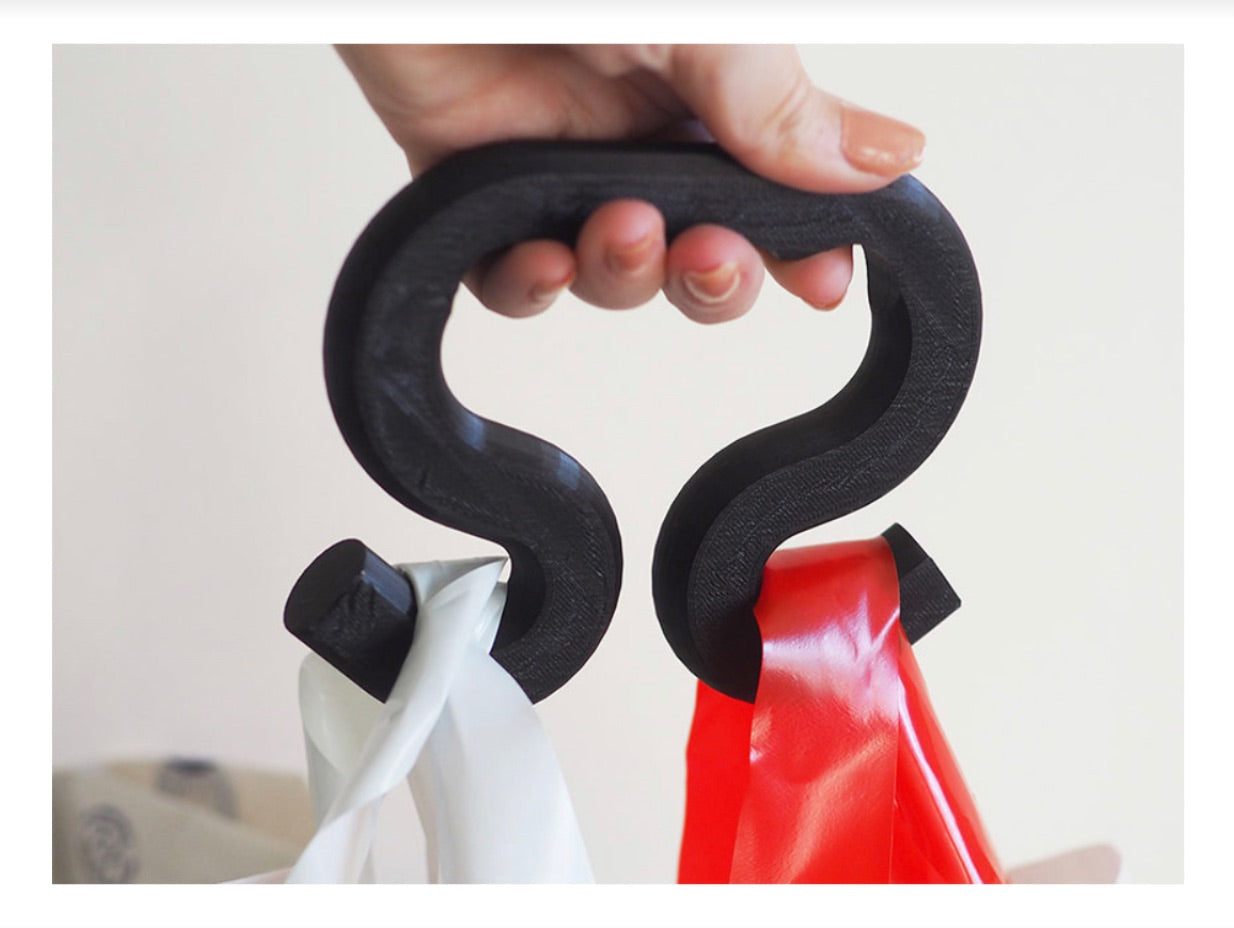3D Printing in Every Classroom: Part III
June 08, 2023

See Part I here.
See Part II here.
Most Compelling 3D Printing Projects Involve Assistive Technology
We?ve considered the worldwide race to bring 3D printing technology to every classroom, and we?ve considered 3D printing at the administrative level, that is, what the aims, goals, and objectives of bringing 3D printing to a U.S. classroom might be. Now it?s time to consider some specific strategies in the classroom, brought to us by people on the frontlines of our educational system, teachers.
These specific projects and lesson plans are resources to select from once you have determined the aims, goals, and objectives of your 3D printing program.
I will disclose my bias from the beginning: I find assistive technology projects most compelling, those that have a social assistance value. One of the best examples of this I have seen is the project Jeremy describes in this blog:
The Sierra project was carried out on behalf of e-NABLE (Enabling the Future), a group that just won a $600,000 grant from Google to continue their work of ?passionate volunteers? making prosthetic hands for under-served communities. Currently, e-NABLE has 55 schools registered as part of their program.
Students and whole classes are able to make prosthetic hands for those who need them with support provided via email and the e-NABLE HUB.
Kits of hard-to-find non-printed parts are provided at a discount at shop3duniverse.com.
Of equal value is another project Jeremy describes in this blog:

Why do these projects take my attention? STEM learning is inherent to almost any 3D project; however, the project with Sierra engages a widening group of people in an assistive technology (social assistance) project and, in doing so, not only teaches important values but show kids how they can have a huge impact in making their world a better place.
I can?t imagine anything more empowering for both giver and receiver than the kind of exchange that happens as Sierra not only makes a prosthetic device for someone but engages her whole class in that enterprise.
Not only did this lesson involve powerful values and empowerment, but in bringing a commercial operation into the picture as a philanthropic driver (when shop3duniverse.com spearheaded a campaign to get Sierra a 3D printer), it engaged Sierra and her classmates in an important aspect of philanthropic endeavor.
The Marble Display Stand project is exciting because it was an experiment in taking a 10-year-old?s idea and putting it into his hands in a matter of hours. This impromptu event perfectly embodied a curricular goal of ?enabling the deep understanding and problem-solving ability that results from seeing abstract ideas actualized within an age-appropriate meaningful time frame.?
Clearly, the excitement that the project generated will lead to having that young man learn to use the technology to manufacture his own next idea.
In addition to the project and lesson plan links presented below, you will find ideas in another of Jeremy?s posts in this blog:
Reports from the Frontlines: 3D Printing Projects in Classrooms
Specific Projects
- Pathfinder Learning Minecraft
- Pathfinder Learning K-12
- MakerBot Academy ? At the bottom of the page you?ll find videos for projects in engineering, architecture, and physics
- Kelly Hines (teacher): A radio segment with a classroom project
- A school in Cambridge, MA: Problem-solving and collaboration ? a group of junior high and high school students in Cambridge, MA, are part of an experimental education program that aims to prove they?re capable of solving real-world problems early with the help of 3D printers, Arduino and group collaboration
- Class Project in Windsor, England: What a teacher taught beyond the mechanics
- Grades 5-12 learn the value of prototyping
- Valuable primarily for a good graphic showing ways to use 3DP in 9 areas of learning, plus this specific resource:
?Typically, students are not allowed to handle fragile objects like fossils and artifacts; 3D printing shows promise as a rapid prototyping and production tool, providing users with the ability to touch, hold, and even take home an accurate model.? A great example of this is GB3D Type Fossils, a free collection of fossils from British museums that anyone can download and print. Sight and touch are powerful senses. Giving students the ability to hold and see the fossils can aid understanding and appreciation for the past. - 4 Schools with 3D Printing Projects
Idea and Design Sharing
Lesson Plans & Curricula
- Introduction to 3D Printing
- Stratasys ? See the left navigation bar under ?Education?
- Stratasys ? A sample video for solving an engineering problem.
- Lesson plan is useful in general, although it promotes a specific printer
- Educational initiatives ? MakeDigital, MakerBot Academy, TinkerineU
- STEM teaching: Pitsco?s 3d curriculum changes the way stem is taught in the classroom
- Nice outline for teaching 3D printing
Recommendations from Teachers Who?ve Done It
- 5 Tips
- 10 ways to get started with 3d printing
- The Invent To Learn Guide to 3D Printing in the Classroom: Recipes for Success.
- 7 reasons every school should have 3d printers in the classroom
And Finally, Funding ? If Your School District Doesn?t Provide It
- Here is what one teacher did
- The funding site ? DonorsChoose.org
Full Circle: 3D Printing Assistive Technology Projects
Bringing this post-full-circle, the kids in this teacher?s classroom wanted to 3d print prosthetic hands. Not only are these kinds of assistive technology projects appealing to adults who want to teach important values, values that are key to building a better society, but they are important to kids, who want to be those builders! Kids are naturally inspired by the possibility of helping others.
Follow us on Twitter (@3dprintingisfun) and like us on Facebook. Subscribe to this blog, or visit us at shop3duniverse.com.

